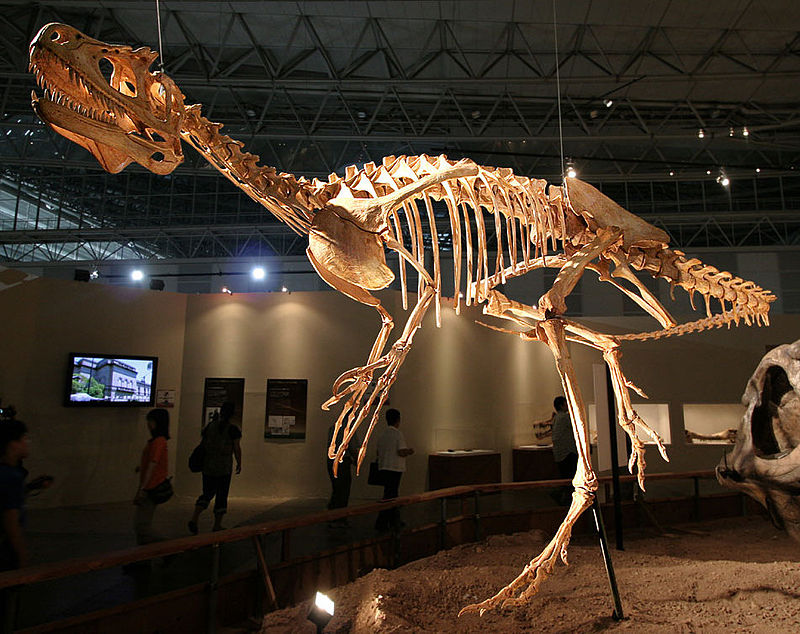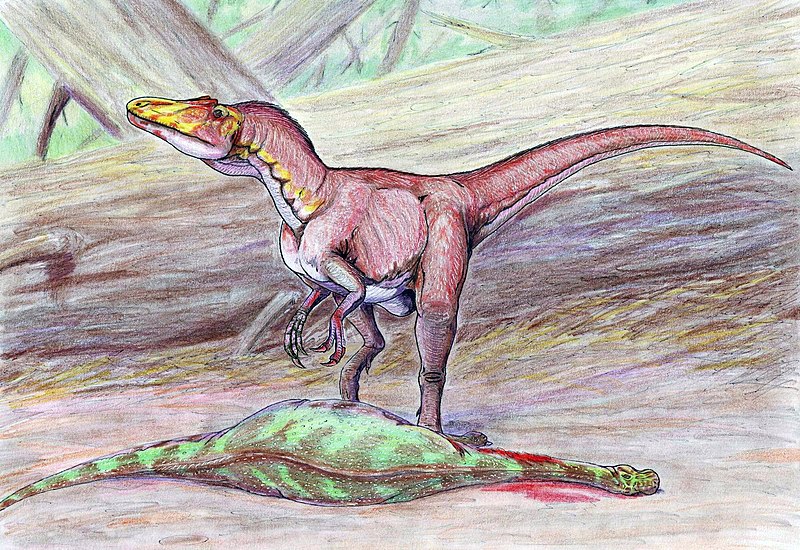
+- WildFact (https://wildfact.com/forum)
+-- Forum: Information Section (https://wildfact.com/forum/forum-information-section)
+--- Forum: Extinct Animals (https://wildfact.com/forum/forum-extinct-animals)
+---- Forum: Dinosaurs (https://wildfact.com/forum/forum-dinosaurs)
+---- Thread: Deltadromeus agilis (/topic-deltadromeus-agilis)
Deltadromeus agilis - DinoFan83 - 01-28-2021
Deltadromeus is a genus of gigantic theropod dinosaur from the mid-Cretaceous period of what is now Morocco, coexisting with the famous giant theropods Carcharodontosaurus and Spinosaurus among other animals. Its describers have suggested it was a fast running species because of the holotype's long and unusually slender hind limbs, and an evaluation by Persons & Currie (2016) corroborated this, with the holotype found to have 7.5% more cursorial capability than the mean theropod in the study's sample.
One fossil specimen of a single species (D. agilis, or "agile delta runner") has been described, found in the Kem Kem beds, which date to the mid Cenomanian age, about 95 million years ago. Some authors consider the animal to be a synonym of the contemporary and possible close relative Bahariasaurus ingens, but a detailed analysis by Mickey Mortimer at the Theropod Database suggests the 2 animals are distinct.
The juvenile holotype (SGM-DIN 2) described in Sereno et al. (1996) has been estimated at 9 meters in length, and could weigh around 1890 kg based on isometric scaling from the likely related and similarly built basal tyrannosauroid Guanlong. Much larger specimens (which may or may not be adults) are known however, namely a lost 1.22 meter femur 64.9% larger than that of the holotype mentioned in Ibrahim et al. (2020) that may indicate a size of 14.8 meters and 8480 kg. This is almost 2500 kg heavier than an adult Tyrannosaurus rex and approaching modern size estimates for Carcharodontosaurus and Spinosaurus, meaning Deltadromeus was almost certainly one of history's largest known land predators.
From what is preserved in the holotype, it can be inferred that Deltadromeus had long arms, a long neck, and an overall slender build as well as its long legs, but because the holotype is missing many diagnostic bones such as the skull, its phylogenetic position is not entirely certain. Different analyses have recovered it as a ceratosaur, an allosauroid, a basal coelurosaur, or a basal tyrannosauroid, with the most comprehensive so far (Motta et al. 2016) favoring the fourth position.
RE: Deltadromeus agilis - DinoFan83 - 01-28-2021
Deltadromeus restored skeleton by Kabacchi.

*This image is copyright of its original author
Deltadromeus skeletal (SGM-DIN 2) by PWNZ3R-Dragon, restored as a ceratosaur.

*This image is copyright of its original author
Deltadromeus restored as an allosauroid by Dmitry Bogdanov.

*This image is copyright of its original author
Deltadromeus skeletal featuring holotype and lost giant femur from Ibrahim et al. 2020, restored as a basal tyrannosauroid.

*This image is copyright of its original author